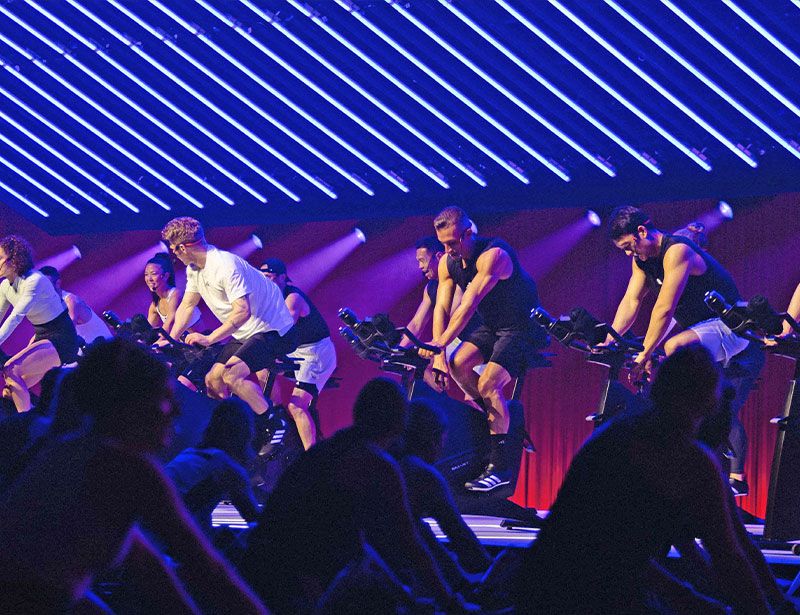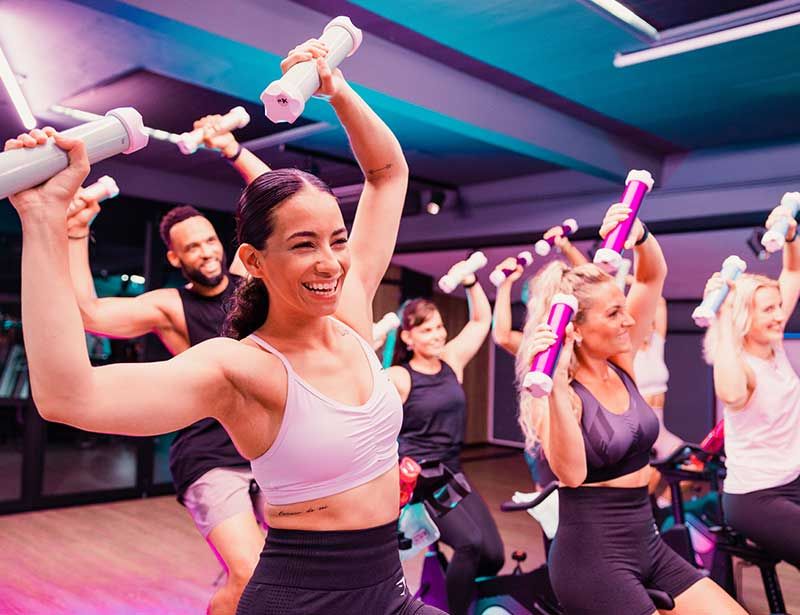Music & programming
Tim Graham
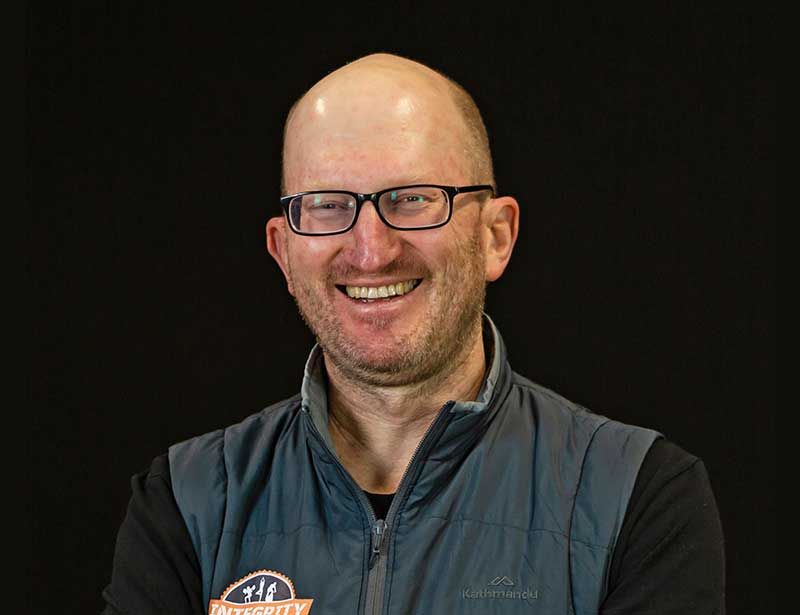
What’s the story behind Integrity?
In 2005 – aged 35 and not having exercised since my teens – a friend got me into group exercise at a big box gym. I loved it. By 2007, I’d qualified as a Body Pump instructor, and by 2009 I was instructing RPM too.
By 2010, I was looking for more of a creative outlet and got into freestyle classes, then in 2012 I decided to break away from the big box gym environment. I wanted more of a connection with the people in my classes: to know names and stories, not just faces.
I joined forces with a few friends – in fact, there were 15 of us when we started! – to create Integrity. The name is inspired by the word ‘integer’, which means a whole number, undivided, a thing that’s complete in itself. That’s how we see group exercise: a strong community where you all come together as one. A real club.
We launched in 2012 with some pre-choreographed classes – we were the first in the state of Victoria to offer Les Mills GRIT and SPRINT – and then, in 2017, started getting more creative, adding in things like TRX, yoga and MMA.
By 2018 – although we do still offer barbell and conditioning classes to meet member demand – we’d reined it back in to focus on cycling as our bread and butter, including another first: we were the first club in Australia to launch Intelligent Cycling.
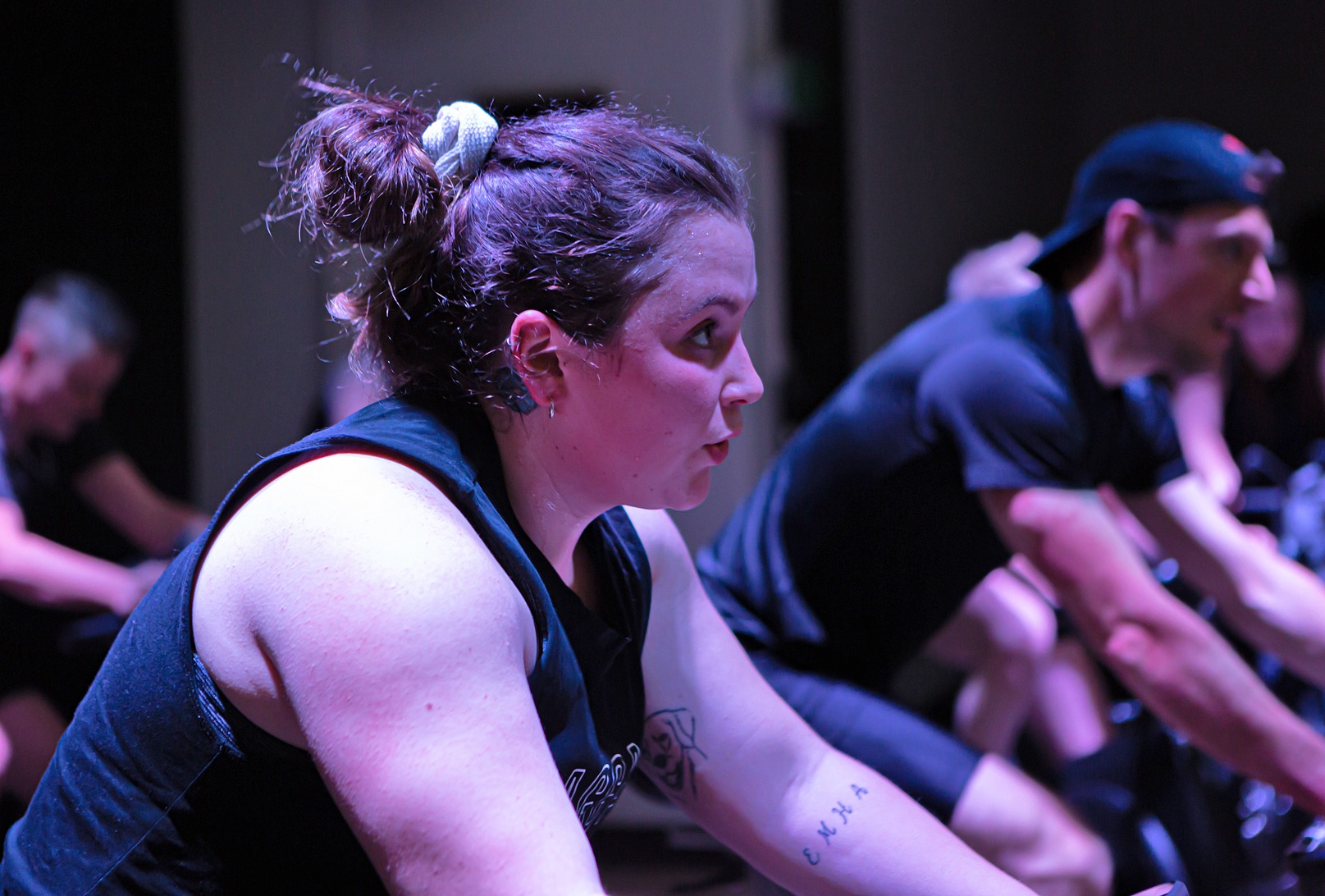
We’d also begun to offer more experiences, including rooftop rides and member road trips where we check out other studios and classes further afield. It’s all about building that sense of involvement, belonging and community.
What programmes do you offer now?
We run around 20 classes a week; if they sell out, we add more. Of these 20-ish classes, around 80 per cent are cycling, which I’ve recently categorised into four groups.
The first is Rhythm, which spans all our ‘intervals choreographed to music’ formats. We’re all qualified Spinning instructors, so that shapes some of these classes. But we’ve also signed up to A STATE OF RIDE (ASOR) which, although pre-choreographed, offers a reasonable level of flexibility.
The second category is Immersive, which includes Intelligent Cycling’s The Journey – where you cycle through a virtual world on the big screen – and our LIT! class, which I’ll tell you more about in a minute.
Thirdly, we have HIIT, which at the moment tends to be either intervals or time trials. We often use Intelligent Cycling here, too, putting the timer or performance stats on-screen. People love knowing what’s coming up next so they know how hard to push, plus we’ve found younger members in particular really engage with anything that involves a screen.
“Our members are hugely loyal. If you think about watching the soccer, with the home fans going mad behind the goal, that’s our members”
And finally, there’s a category I’m calling Competitive, which we’re still developing. We’ll definitely be bringing Zwift into the studio, though, creating an experience that uses our big screen as well as members’ phones. It could be power profile training – something we might even charge a premium for – or it could be more about social Zwift races. I don’t know yet. I don’t tend to design something and then build exactly that. My creative process is more like painting, where you start putting things down and then keep experimenting and building on what you’ve done until it’s finished.
Which are your most popular classes?
Around 80 per cent of our cycling classes fall into the Rhythm category. We offer the other stuff too – scattered throughout the week to hit different day parts and different members – because if you do group exercise for long enough, you will get bored and you’ll want some variety. But I think Rhythm formats – and, for that matter, cardio in general – have had a bad rap over recent years. It’s actually a really nice, low-tech disconnect – away from measurement and numbers and visual overload – and it’s still our main focus.
Our rooftop rides are especially popular, selling out every time. We only do them once a year though, at the beginning of spring, because taking bikes to the top of the tallest building in town is no small task!
Why aren’t all your classes freestyle?
You need experience to deliver a great freestyle class, and there are only three of us original founders left. For any new instructor coming in to the business, it’s great to have pre-choreographed content – ASOR – to learn the ropes. You can then move on to Intelligent Cycling, where you get to choreograph but don’t have to remember it all as the system prompts you, before progressing to freestyle.
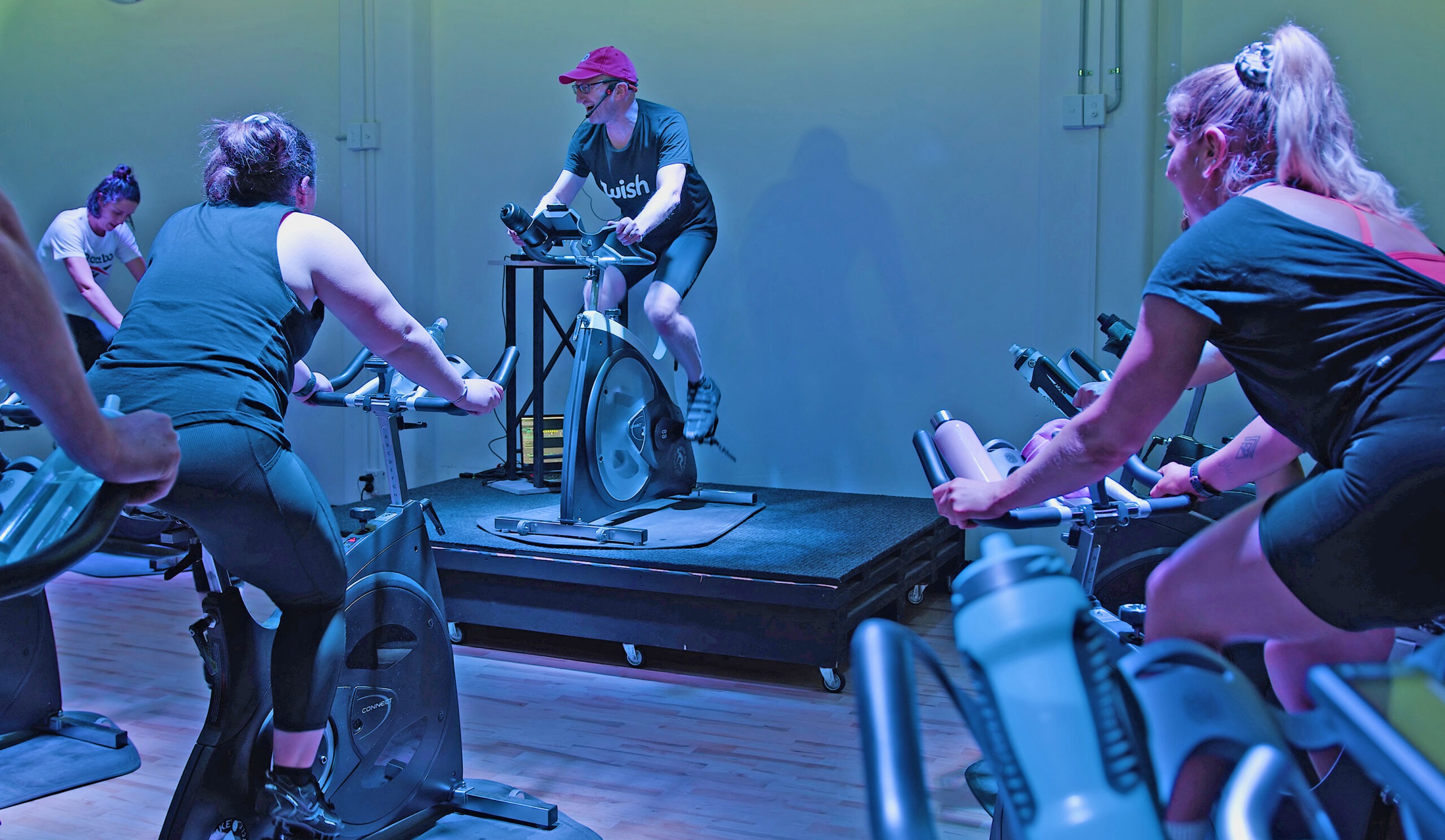
Intelligent Cycling, to me, is almost perfect, not least because you choose your own music. I carefully match music to the virtual world we’re cycling through. For the aerial world with the dragons, for example, I choose very cinematic music mixed with rap for contrast. For space, I pick space-themed songs mixed with futuristic techno music. For the dinosaur-filled jungles, I choose world music, bongos, digeridoos.
I’d like a bit more scope to dictate the content of the virtual worlds themselves, but the Intelligent Cycling team tells me I’m more creative than the average customer! Some of my ideas have landed, though – the road now sets on fire when you’re in the highest zone, for example, which was my suggestion – so I’m going to keep chipping away!
Your members also influence your music choice. How?
I’ve created something I call ‘Algorhythm’, which allows members to influence the music in class without directly asking me to play a specific track, which likely wouldn’t be right for a cycling workout.
Any member who uses Spotify gives me the playlists it suggests for them based on what they’ve listened to – Discover Weekly, for example. Algorhythm then puts all these tracks through an algorithm I’ve set up – a ‘what I think works for indoor cycling’ filter – which uses information Spotify can tell us about each track: its energy, dance-ability, how acoustic it is, how instrumental, how happy…
Off the back of this, Algorhythm automatically gives me a weekly shortlist of 100 songs in Spotify – songs that will appeal to members and that will work for indoor cycling. I listen to them and hit ‘like’ on the ones I want to use; I normally keep around 10 per cent. In this way, our members contribute to the music at the club just by listening to Spotify.
Over time, the AI behind Algorhythm also builds up libraries of my ‘liked’ songs that match specific criteria: high-energy, instrumental, 80 RPM intervals and so on. It means I can easily find exactly what I need, knowing the members have also recommended it and I like it.
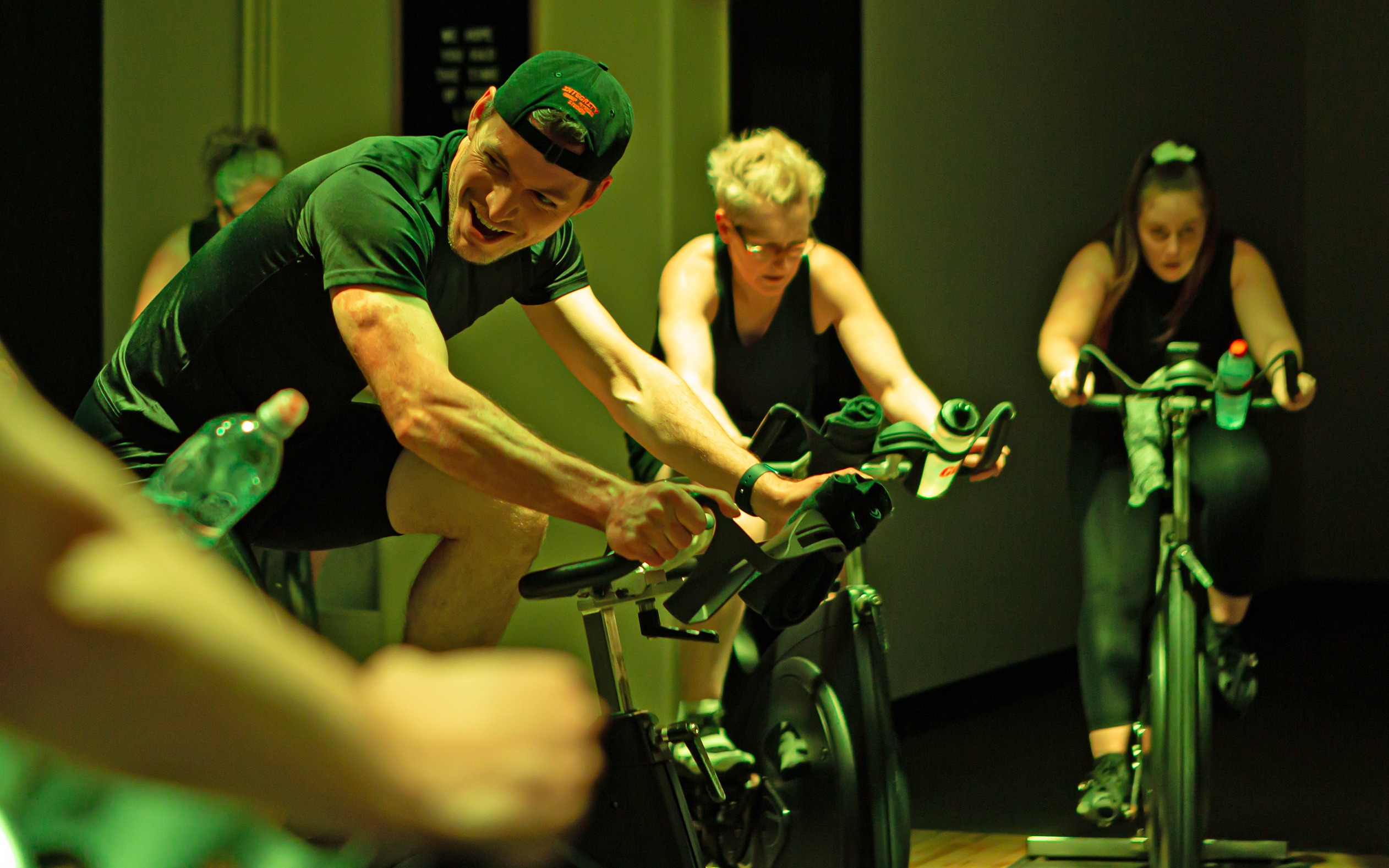
It’s transformed our approach to music and our younger members in particular love it – good news, as attracting younger members was a key driver. Older members are 50/50, but only because they miss tunes that have become familiar. They’ll get new favourites soon though – we only launched Algorhythm this year – because older tracks still get through. It’s purely about how a song feels. It’s nothing to do with genre, era or artist.
I can see us commercialising this system in the future. The filter would probably just need to be set up differently for each club, as everyone will have a different view on what makes for perfect indoor cycling music.
You’ve created your own AV system too. Tell us more.
I’ve always found lighting systems to be a backdrop or even a distraction in-class, but felt they could be so much more. I then had a dream about a class with fantastic lighting and I started looking into what I’d need to do to make it happen.
Most lights cost around A$600 each, but I found some for A$30 each on one of those bargain websites and bought 60 of them! I had them all on my kitchen table, trying to figure out how to use them, and found some equipment that allowed me to synchronise the lights to music.
I also found a guy in the US – a lighting director in a church where they regularly had Christian rockbands with thousands attending – and he’d written his own software for the lighting. I bought it, and it allows me to send specific instructions to each individual light for every split-second of every song: when to pulse, strobe, what colour to turn and so on. We have around 5,000 data points flying around the studio for every split-second of music.
We created the whole system for A$3,000, plus A$2,000 for a new computer, with members funding it entirely with donations just because they knew it would be great. The tradespeople among our membership then helped me build it into the studio.
“It takes around 15 hours per song to choreograph the lights to the music, so we only do this for our LIT! class, which we treat more like an event than a normal class”
It takes around 15 hours per song to choreograph the lights to the music, by the time you’ve worked out what you want the lights to do, then programmed them to do that. So we only do this for our LIT! class, which we treat more like an event than a normal class, running it about once a month. We use the same soundtrack and lighting choreography for about six months, putting LIT! in different places on the timetable so different members get to experience it.
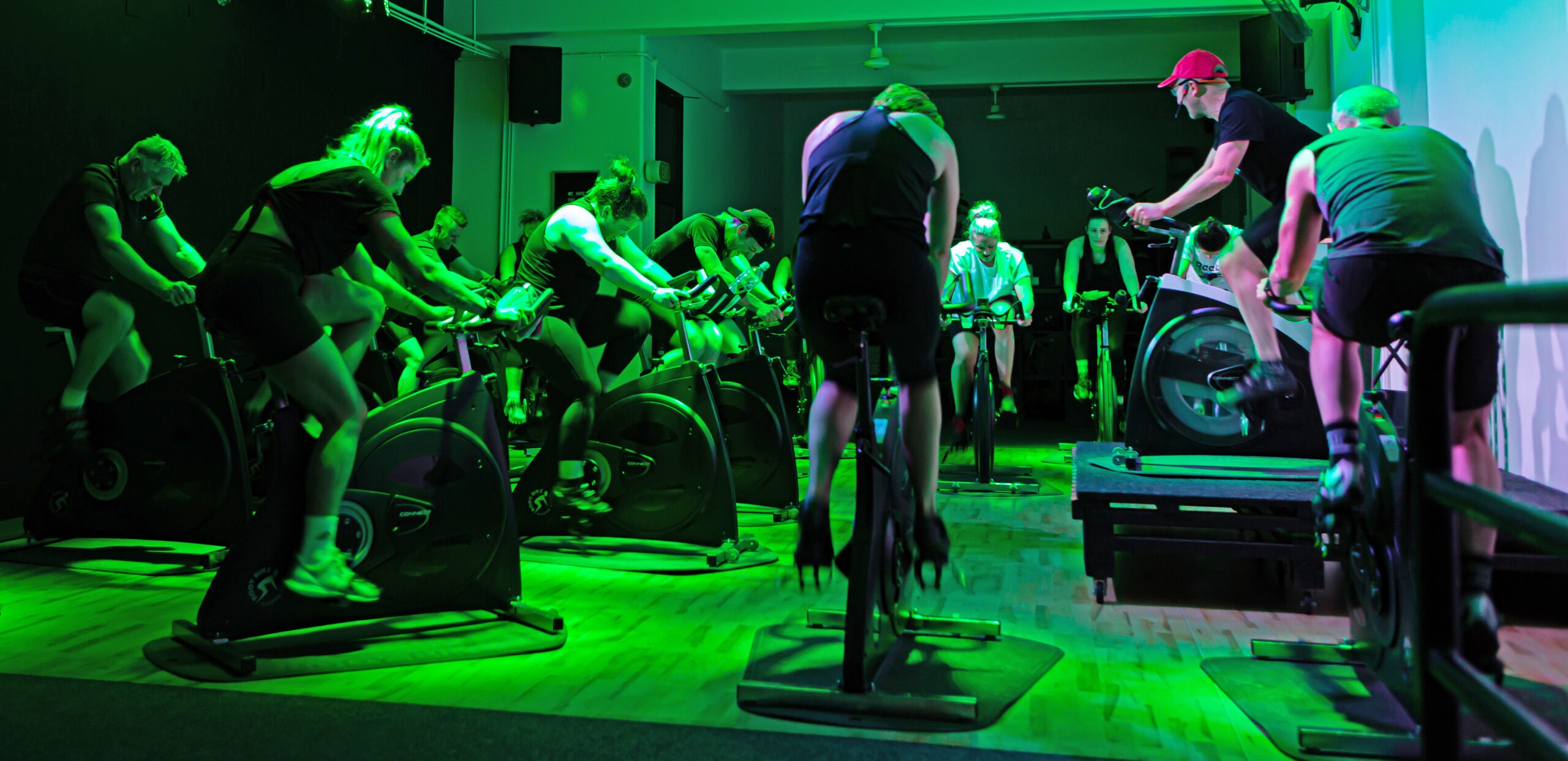
I deliberately pick songs with lots of interesting elements I can attach lighting to – drops, fade and explode, cool sound effects, strong snare drum and so on – so the lighting becomes almost as important as the music. It’s a really immersive experience.
Tell us more about your community.
We’re tiny. We have 150–200 members visiting our 200sq m studio in the basement of a building, with classes typically catering for 15–20 people. But our members are hugely loyal. The way I talk about them: if you think about watching the soccer, with the home fans going mad behind the goal, that’s our members!
Most sign up to an unlimited class package, which at A$40 a week places us in the mid-market. And they get really into it. Some people come a couple of times a week, some six or seven, but our average is around four weekly visits per member.
Ballarat is hugely competitive for fitness, so it’s hard to get new people in, but we fill lower performing classes using a pay as you go model. Many of these customers ultimately convert to membership.
If people are new to cycling, I’ll spend some time one-to-one with them, getting them to sit on the bike and pedal while they chat to me. We’ll then talk about riding to a rhythm, standing in the pedals and so on, and I’ll tell them when they’re ready for class. Ours isn’t a huge club, so I don’t spend too many hours a week doing this, but if you throw someone straight into a class and they have a bad experience, they’ll never come back. You have to look at the potential lifetime value of each member. You have to invest in their future membership.
In the process, I get to know all about them, their families, their dogs! It builds community and is a good model for a small club like ours.
And when we’re in class together, it really is a community. Old or young, we’re in it together. Actually, I think our older members enjoy the energy the younger ones bring.
And we have managed to get younger people in. This generation is so swayed by Instagram, they feel they have to look perfect. We focus on providing a ‘pressure off’ experience – we’re clear you don’t have to be superhuman at Integrity – and we’ve gained a few what I call ‘refugees’ escaping that pressure they felt at other clubs.
How have you fared during COVID?
We’ve had five lockdowns now: one big one and then a series of shorter ones. The fifth ended today [interview conducted 27 July 2021] so we’re back to class tomorrow.
So far, though, we’ve been OK financially. All our members have carried on paying throughout – they’ve wanted to do whatever they could to support us – and we’ve had some assistance too.
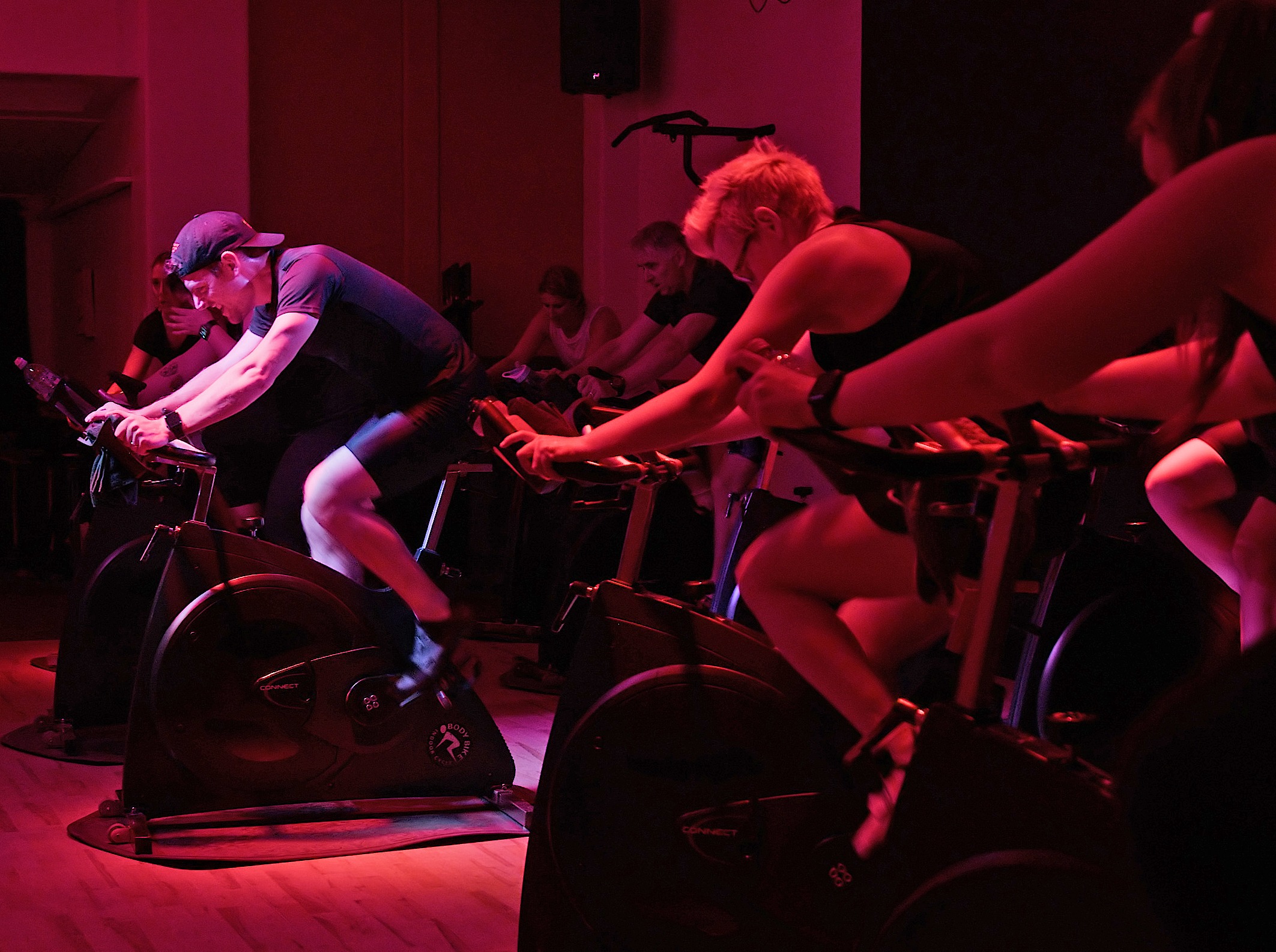
On day one, we sent equipment out to everyone who wanted it, from bikes to barbells. Others were happy doing yoga, so only needed mats. And some wanted to buy their own bikes; I got them a good deal with BODY BIKE and put the bikes together for them, delivering them to their houses.
Days two to four, we set ourselves up to live-stream using a platform called dacast.com, where you can live-stream to a schedule in a password-protected area behind your website. That allowed us to take advantage of a six-month music streaming licence from OneMusic Australia, so we didn’t fall foul of any music rights – one of the biggest headaches with online provision. We’ve live-streamed our way through every lockdown.
“We’re clear you don’t have to be superhuman at Integrity and we’ve gained a few what I call ‘refugees’ escaping that pressure they felt at other clubs”
Then each time we’ve re-opened, members have come straight back, even when all we could offer were classes in the car park. Honestly, I think they’d come back even if we were just doing runs up and down the street! And when we were able to move back indoors, we were pretty much back to normal: our classes have always been small, so our capacity has been unaffected by COVID restrictions.
What are your plans for Integrity moving forward?
Everything we do works, but it’s bootstrapped. I’d love to streamline our AV so the systems are easy for everyone to use, not just me.
I’m looking into video mapping, potentially putting 3D objects – big spheres and things – into the studio to project video onto.
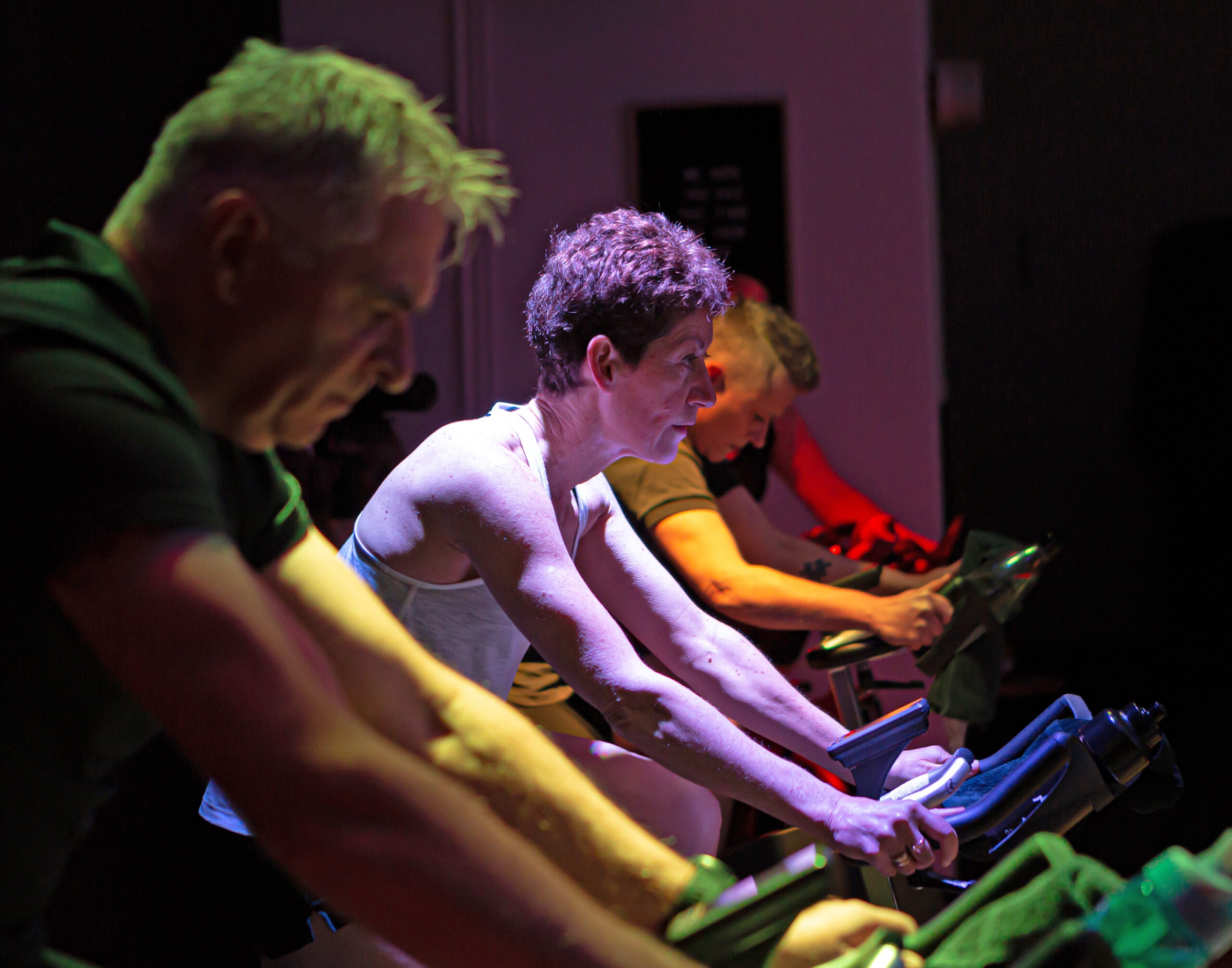
And I’d love to get a bigger, high definition screen. We have a 4m projection system at the moment – the projector we got for free from a local school that was closing down – but I’d love to upgrade that system to make it even more immersive.
I also want to see how far we can take the immersive side of things. Each bike has a spotlight above it, so what if we could link our lighting to individual cyclists’ wattage or cadence? If we can, it paves the way for games during class where performance data controls the lights in a fun, competitive way.
We could have red versus green teams in a sprint, for example, where you have to sprint when the light above you turns white; your turn ends when your wattage drops too low and your light turns back to red or green. Or we could do ‘tug of war’, where if you aren’t pedalling hard enough you’re lost to the other side and your light changes colour to bring you into their team.
There’s so much I want to explore. I just have to find the time! And I’d love to see the rest of the indoor cycling sector follow suit. Why should everything be controlled by a few big global organisations? Let’s get creative as a community, trying new things out and seeing what flowers.
Video

Conceived, powered and funded by BODY BIKE®, RIDE HIGH has a simple mission: to celebrate and champion the very best of indoor cycling, sharing ideas, stories and experiences from around the world to inspire the sector on to even bigger and better things. Subscribe for free by leaving your details below and we'll send indoor cycling's hottest news direct to your inbox three times a year.

